It's like a small museum. Pavement, a second-hand shop and antiques store in Nogata

We introduce Pavement, a second-hand goods and antiques store located just a seven-minute walk from Nogata Station on the Seibu Shinjuku Line in Tokyo. There are many valuable items, including reliefs from over 1,000 years ago and pottery from the Edo period.
Hello. I'm Chiitan, a Nakano Tourism Reporter. Chibi Nakano is with me. When you walk around Nakano, Tokyo, you may feel like you've entered a maze and discover unexpected shops.
I passed a shop and saw a lovely vase, so I was admiring it from the outside when a shop staff member said, "It's spacious inside, so please come and take a look." When I went inside, I found a white Hagi ware plate. I was surprised when I heard the price! I bought it without hesitation. This is Pavement, a shop where you can find great bargains. It is a recycle shop and antique art store.
It is located about a 7-minute walk along the tracks from Nogata Station on the Seibu Shinjuku Line in Tokyo towards Shinjuku.
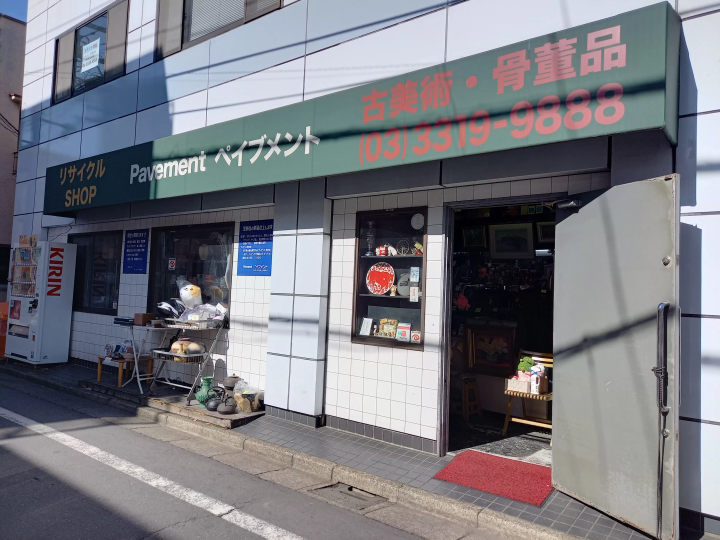
When you look around the store, you'll see that there are so many products lined up.
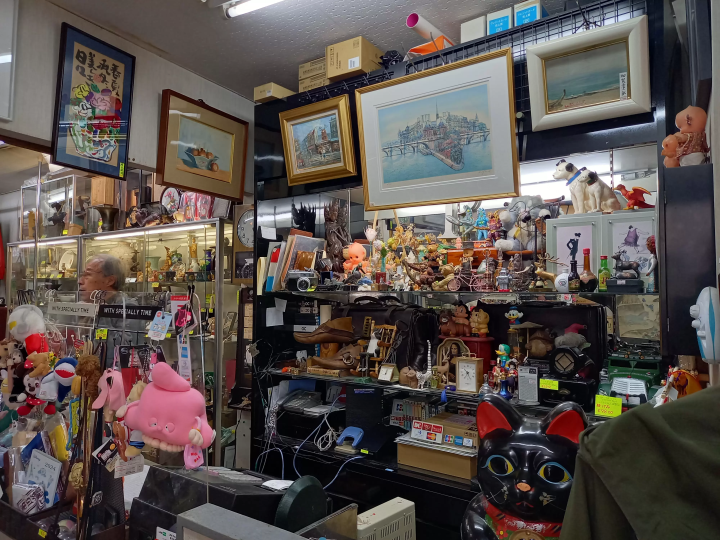
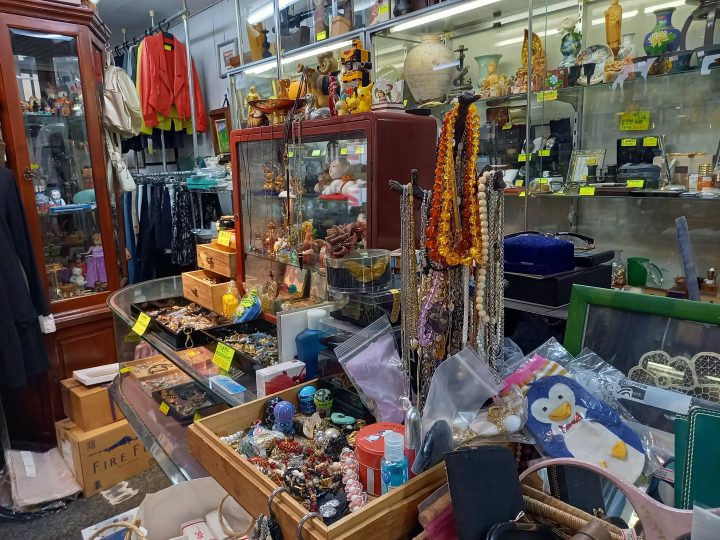
Even though the products are lined up in a small space, the store still has a clean feel.

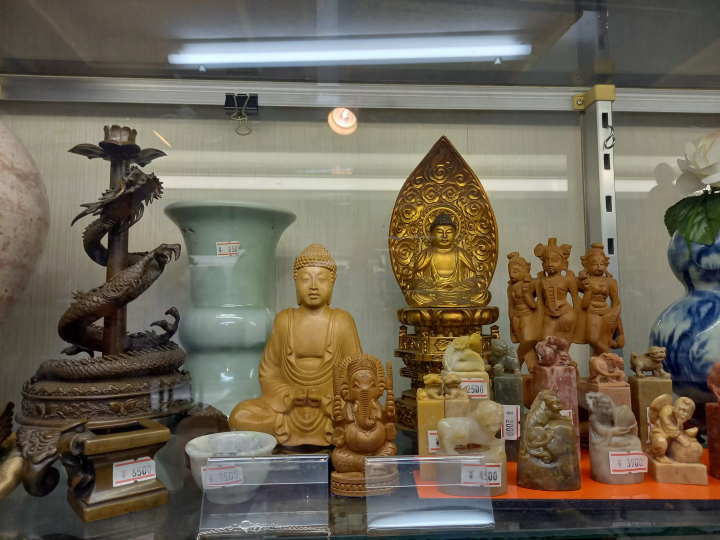
"Hmm? Where's Chibi Nakano?"

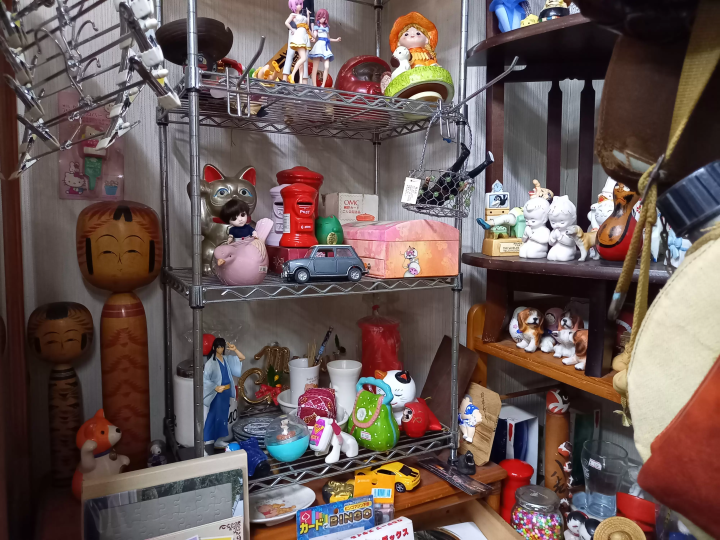
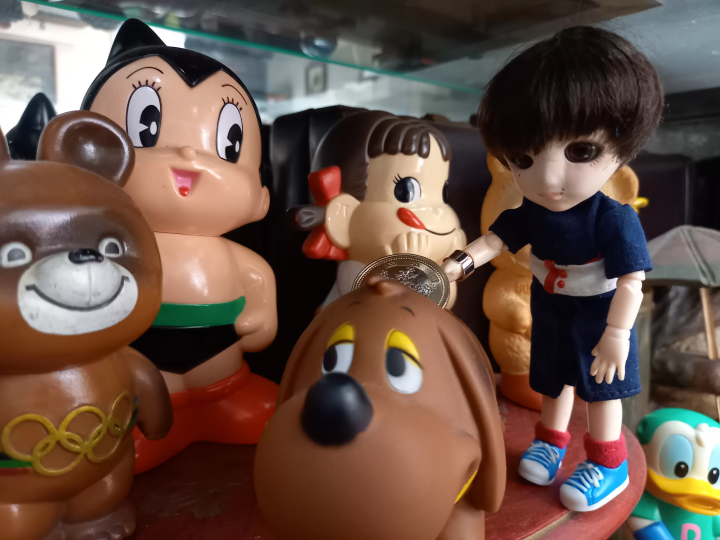
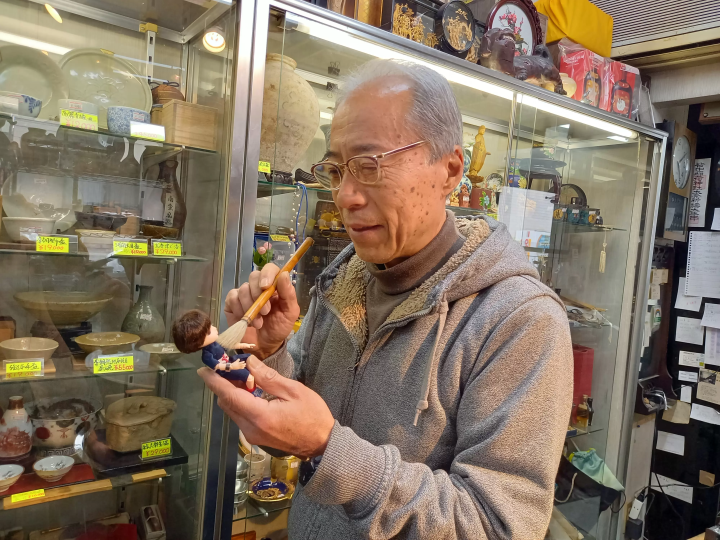
"Oh, little Nakano, Kazu is cleaning up for you!"
We spoke with Umezawa Kazuya, the owner, aka "Kazu-san." - Please tell us the origin of the store's name. "My middle school English teacher once said, 'I like the sound of pavement,' and that made a lasting impression on me. I have an image of a European cobblestone path with the store owner welcoming customers, saying, 'Please feel free to come in.' Apparently there is a famous musician group called 'Pavement,' and customers from Europe and America often ask me, 'Do you like music?'" Kazu-san says that he sometimes serves customers in English.

"I learned English by talking to the American customers who came almost every day. This is also about connecting with people," says Kazu. "We opened on March 12, 1996. It was hard to find a space on the first floor, so we were lucky to find this place available."
-What kind of customers do you have? "Men and women of all ages. We have everyone from children clutching 100 yen coins to 90-year-olds. We also have customers from overseas who enjoy our shop."
-Have you ever had any difficulties purchasing something? "I'm licensed as a secondhand goods dealer and purchase everything except living things. At first I didn't have much knowledge and wasn't confident, so I once consulted an expert about a tea bowl that I'd kept in storage for 20 years and found out it was a fake. Sometimes I don't put things on the shelves until I'm sure about them." With all this learning, he says he's now able to check products with confidence, using his experience and knowledge. He also learned by reading a lot of books and carefully observing the products he had on hand.
-Please tell us about the particularities of your store. "We sell items that have human warmth. I also like broken things. I try to repair as many items as possible before selling them."

This plate was repaired by Kazu using the traditional Japanese technique of "kintsugi."
Kazu describes the backgrounds and stories that can be sensed from the items as "exuding a good atmosphere." "There are some enthusiasts who are looking for perfect items or items with a reputation, but I'm not really conscious of commercial aspects. I want to stock items in my store that are interesting," he says, adding that he likes anything that has a cultural feel. "I'm a lover of things. Old things are living witness to history. There are still things made by people over 1000 years ago that remain. It's a joy to be able to learn about history based on them."
-What is the oldest item in your shop? "It's part of a relief from the base of a Gandhara stone Buddha, and it dates back to around 300 to 500 AD. It's in what is now Pakistan. It was during the Roman Empire, when European and Asian cultures merged."

"The next oldest is a painted vase from the Tang Dynasty (present-day China), dating to 700 A.D., about 1,300 years ago."
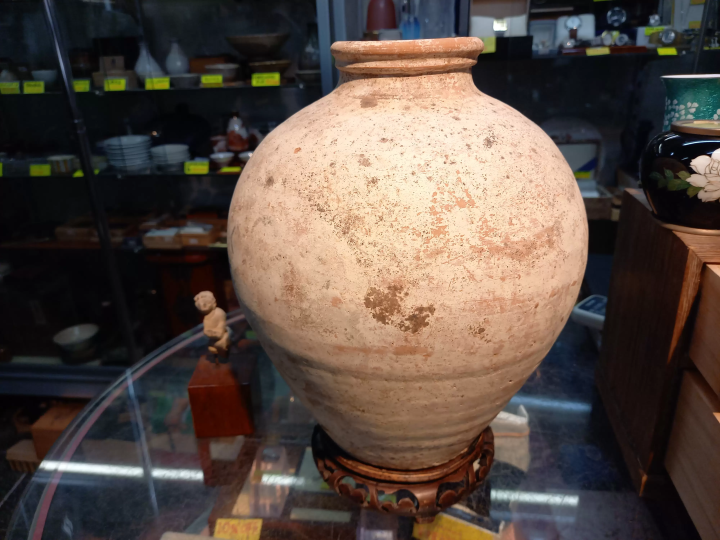
"This is an early Imari ware. It was made in Arita in collaboration with Korean people who came to Japan. It probably dates back to the 1610s. Each piece is imbued with emotion and culture. I think it would be fascinating to hear stories from people of that time."
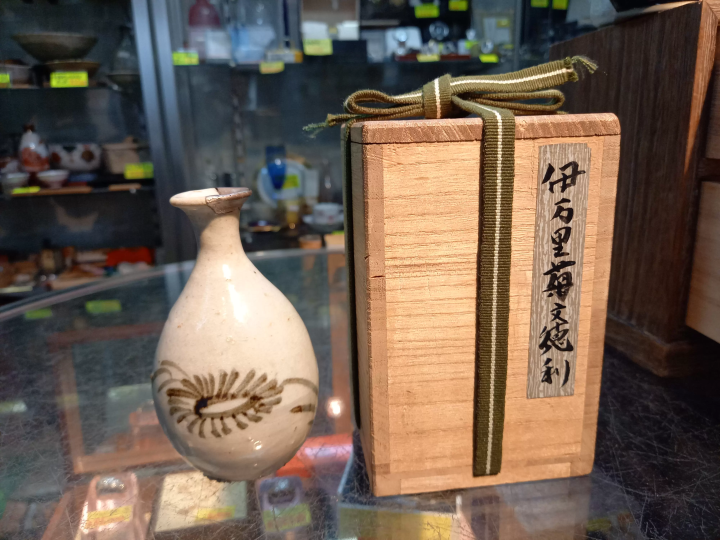
I was also shown the "koshirae" (the exterior of a Japanese sword) from the late Edo period, and the "sekiba" (a sword fitting) that gave rise to the Japanese expression "kiriba zumeru" (to be worn down). The metalwork is really beautiful.
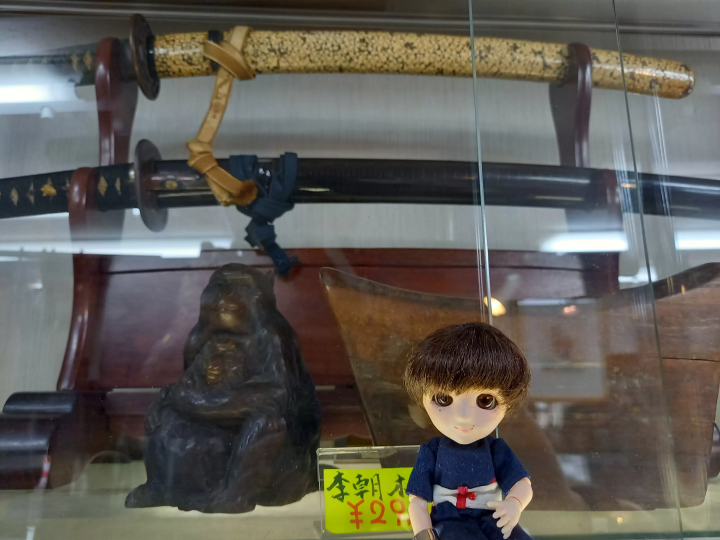
The variety is so extensive it's like a small museum.
-Finally, what is your favorite thing about Nakano? "I love how Nogata is filled with the atmosphere of a downtown area. There are many old shops that have been in business for a long time, and they stay the same as the streetscape."
"There are some things about the quality of a product that can't be conveyed through digital media. Come to the store, look and touch. I think that's the fun part," says Kazu-san. The shop is comfortable with his gentle hospitality. It's a bit nostalgic, and it's exciting to search for something that catches your eye. Surrounded by items waiting to be discovered, Chibi Nakano seems to be having fun.
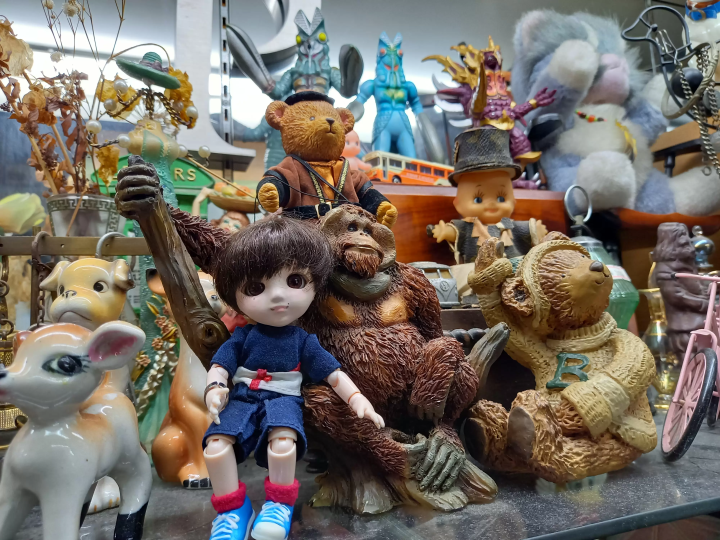
Pavement
Location: 3-27-3 Nogata, Nakano-ku, Tokyo
Access: 7 minutes on foot from Nogata Station on the Seibu Shinjuku Line
Phone: 03-3319-9888 Business hours: 10:00 to 16:00
Closed: Sundays (and other special holidays)
All types of credit cards, electronic money, and QR code payments are accepted. SMBC stera is also supported.
Nakano city is located in the western part of Tokyo's 23 wards. It is especially famous for Nakano Broadway, known as the "holy land" of subculture, but it also has many other tourist attractions such as historic shrines and temples and gourmet food. While the area around Nakano Station is undergoing a "once in a century" redevelopment, the town is undergoing change, and the town is bustling with old-fashioned, friendly shopping streets, making Nakano a very diverse city. This diversity is also what makes it a city with a population of about 17,000 people from about 120 countries.
The contents on this page may partially contain automatic translation.































![[Next event confirmed! / Report] “Let’s Eat Tokyo Food”](https://resources.matcha-jp.com/resize/720x2000/2025/12/26-254125.webp)
![[Kanazawa] Enjoy the world of gold leaf to the fullest in the city with the highest production volume in Japan](https://resources.matcha-jp.com/resize/720x2000/2025/11/12-249564.webp)
![[2026] Family Winter Trip to Suzuka Circuit! – For Both Day trips and Overnight Stays!](https://resources.matcha-jp.com/resize/720x2000/2025/12/26-254097.webp)
![[Northern Okinawa] 4 Recommended Cosmos Fields in Okinawa | Sunflowers and Cherry Blossoms in the Same Season!](https://resources.matcha-jp.com/resize/720x2000/2024/08/12-192028.webp)
